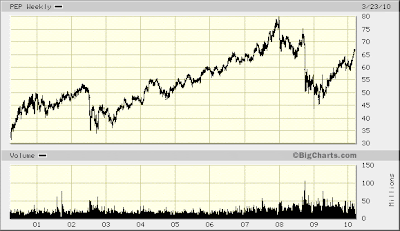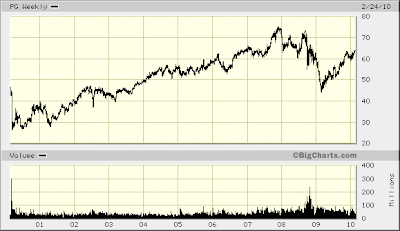 Linked here is a detailed quantitative analysis of Meridian Bioscience Inc. (VIVO). Below are some highlights from the above linked analysis:
Linked here is a detailed quantitative analysis of Meridian Bioscience Inc. (VIVO). Below are some highlights from the above linked analysis:
Company Description: Meridian Bioscience Inc. develops, makes and sells disposable diagnostic test kits and related products used for the rapid diagnosis of infectious diseases.
Fair Value: I consider four calculations of fair value, see page 2 of the linked PDF for a detailed description:
- Avg. High Yield Price
- 20-Year DCF Price
- Avg. P/E Price
- Graham Number
VIVO is trading at a discount to only 3.) above. The stock is trading at a 28.8% premium to its calculated fair value of $17.94. VIVO did not earn any Stars in this section.
Dividend Analytical Data: In this section there are three possible Stars and three key metrics, see page 2 of the linked PDF for a detailed description:
- Free Cash Flow Payout
- Debt To Total Capital
- Key Metrics
- Dividend Growth Rate
- Years of Div. Growth
- Rolling 4-yr Div. > 15%
VIVO earned two Stars in this section for 2.) and 3.) above. The stock earned a Star as a result of its most recent Debt to Total Capital being less than 45%. VIVO earned a Star for having an acceptable score in at least two of the four Key Metrics measured. Rolling 4-yr Div. > 15% means that dividends grew on average in excess of 15% for each consecutive 4 year period over the last 10 years (2000-2003, 2001-2004, 2002-2005, etc.) I consider this a key metric since dividends will double every 5 years if they grow by 15%. The company has paid a cash dividend to shareholders every year since 1990 and has increased its dividend payments for 19 consecutive years.
Dividend Income vs. MMA: Why would you assume the equity risk and invest in a dividend stock if you could earn a better return in a much less risky money market account (MMA)? This section compares the earning ability of this stock with a high yield MMA. Two items are considered in this section, see page 2 of the linked PDF for a detailed description:
- NPV MMA Diff.
- Years to > MMA
VIVO earned a Star in this section for its NPV MMA Diff. of the $6,457. This amount is in excess of the $1,600 target I look for in a stock that has increased dividends as long as VIVO. If VIVO grows its dividend at 15.0% per year, it will take 3 years to equal a MMA yielding an estimated 20-year average rate of 3.98%. VIVO earned a check for the Key Metric 'Years to >MMA' since its 3 years is less than the 5 year target.
Other: VIVO is a member of the Broad Dividend Achievers™ Index.
Conclusion: VIVO did not earn any Stars in the Fair Value section, earned two Stars in the Dividend Analytical Data section and earned one Star in the Dividend Income vs. MMA section for a total of three Stars. This quantitatively ranks VIVO as a 3 Star-Hold.
Using my D4L-PreScreen.xls model, I determined the share price would need to increase to $38.46 before VIVO's NPV MMA Differential decreased to the $1,600 minimum that I look for in a stock with 19 years of consecutive dividend increases. At that price the stock would yield 1.77%.
Resetting the D4L-PreScreen.xls model and solving for the dividend growth rate needed to generate the target $1,600 NPV MMA Differential, the calculated rate is 10.4%. This dividend growth rate is less than the 15.0% used in this analysis, thus providing a margin of safety. VIVO has a risk rating of 2.00 which classifies it as a medium risk stock.
VIVO is an integrated life science company that manufactures, markets and distributes a broad range of innovative diagnostic test kits, purified reagents and related products. These products provide for early diagnosis of common medical conditions, such as gastrointestinal, viral, urinary and respiratory infections. VIVO's diagnostic products are used outside of the human body and require little or no special equipment. The company has strong market positions in the areas of gastrointestinal and upper respiratory infections, serology, parasitology and fungal disease diagnosis. VIVO markets its products to hospitals, reference laboratories, research centers, veterinary testing centers, physician offices and diagnostics manufacturers in more than 60 countries around the world. Although the stock is currently trading above my $17.94 fair value price, I view it as a company with a lot of potential; thus I have added it to my watch list. For additional information, including the stock's dividend history, please refer to its data page.
Disclaimer: Material presented here is for informational purposes only. The above quantitative stock analysis, including the Star rating, is mechanically calculated and is based on historical information. The analysis assumes the stock will perform in the future as it has in the past. This is generally never true. Before buying or selling any stock you should do your own research and reach your own conclusion. See my Disclaimer for more information.
Full Disclosure: At the time of this writing, I held no position in VIVO (0.0% of my Income Portfolio). See a list of all my income holdings here.
Recent Stock Analyses:
This article was written by Dividends4Life. If you enjoyed this article, please vote for it by clicking the Buzz Up! button below. [RSS] [Email] [Twitter]
Continue Reading »













